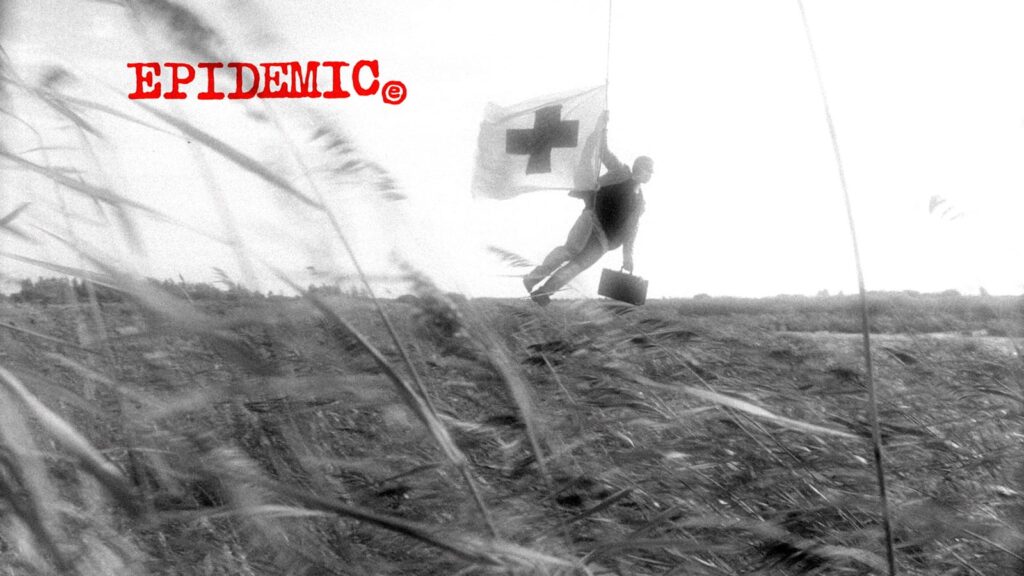The category for May over here at Horror Press was more of a free-for-all. When thinking of films to discuss, my first thought was underappreciated films from well-known filmmakers. What started as that list slowly morphed into half Wes Craven appreciation and half Udo Kier appreciation. And if you ask me, those two categories aren’t too shabby. Before we dig into one of Lars von Trier’s earlier works, we must accept that von Trier is inherently not a good person. The reason I picked this film is to highlight one of the most stylistically beautiful, this-shouldn’t-work-but-somehow-does films from the tail end of the 1980s.
Lars von Trier’s Epidemic: A Stylistic Marvel of the Late 1980s
Epidemic follows Lars von Trier and Niels Vørsel, who play fictionalized (though not by much) versions of themselves. They find themselves in trouble when the script in the film gets corrupted on a floppy disk. Von Trier and Vørsel spend the next few days isolated as they attempt to quickly complete a new script before their producer, Claes Kastholm Hansen, shows up in five days. Their new plague-based script is risky but becomes more dangerous when the events they are writing seemingly become a reality.
Written by Lars von Trier and Niels Vørsel and directed by von Trier, Epidemic is an interesting practice in self-reflection from two artists who are afraid to truly reflect. Epidemic is a dystopian past where von Tier and Vørsel lost the script for The Elements of Crime and inadvertently created a boil-filled pandemic. To have the penultimate film in your planned [debut] trilogy (which ended with the mildly infuriating Europa) be a meta-commentary on what you perceive yourself as is brave. It’s also where the film fails.
Udo Kier Shines Amidst Von Trier and Vørsel’s Uneven Performances
What works in favor of Epidemic is how visually interesting von Trier turns nothingness. It’s a more active, less cerebral Danish response to My Dinner With Andre. A majority of Epidemic is two men in a room talking with one another, and von Trier somehow finds a way to make it compelling. The film jumps back and forth between real life and the film they’re writing without losing a beat. Its deliberate pacing might be a turnoff to fans of later von Trier, but this pre-Dogme 95 film sets the groundwork for what the auteur was working towards.
One thing I’ve always appreciated about his films is how he selectively utilizes lighting. Using black and white film at the tail end of the ’80s is a bold choice that works in the film’s favor. Different film stocks accompany different emotions in Epidemic, which lends to the film’s lighting being harsher, resulting in a more visually emotional film. Intense and deliberate lighting helps von Trier frame both the action and the characters in a way I wish he would attempt again. Gone are the mentally laborious stock videos that try to imply a deeper meaning than presented; Epidemic feels like a true work of art.
Is Epidemic the Right Starting Point for Lars von Trier Fans?
If you’ve never seen a Lars von Trier film before, I could not recommend Epidemic any less. But if you’re a seasoned von Trier fan and haven’t seen Epidemic, then it’s time. Epidemic is a bumpy ride that plays out in the least von Trier way possible. When it comes to film, the filmmaker has to trust their audience and vice versa. This film feels like von Trier is attempting to earn the trust of his soon-to-be audience. Whether you go along for the trip or not, well, that’s your call.
